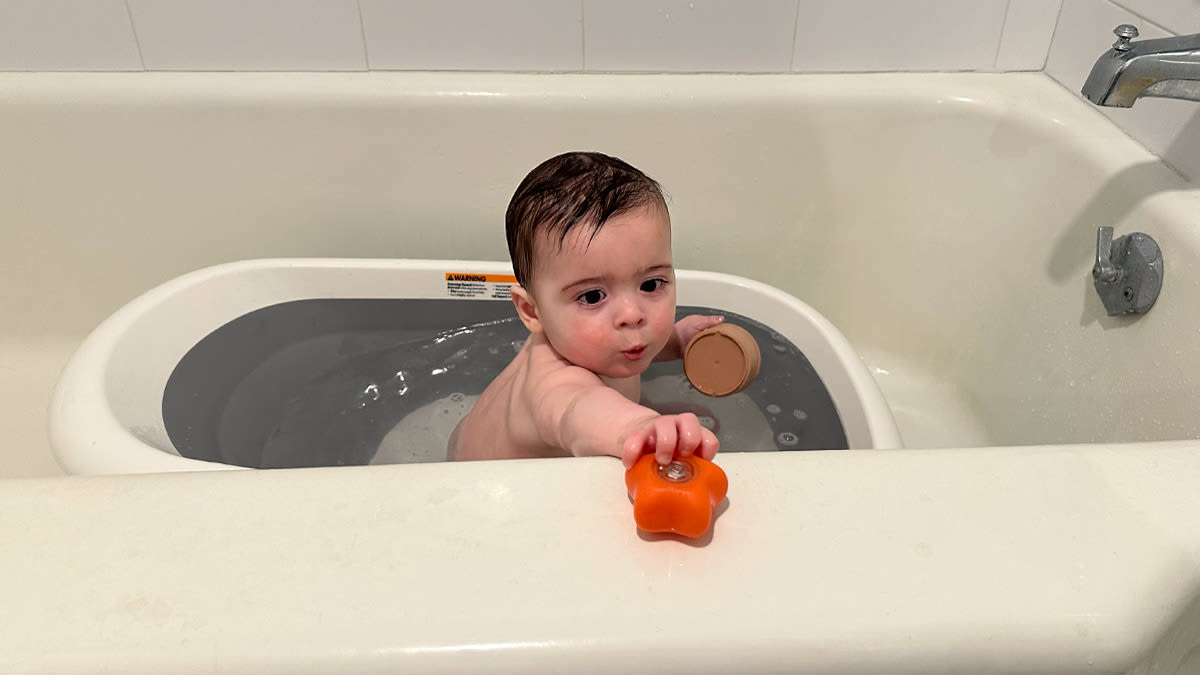Best Baby Bathtubs, According to Our Tests

All baby bathtubs sold in the U.S. must meet a federal safety standard that ensures they’re safe for use. It requires compliance with ASTM F2670, a product safety standard developed with input from companies, regulators, and consumers that addresses factors like a tub’s size, design, and materials. Here are the other safety considerations to keep in mind when buying or using a baby bathtub, according to experts.
Look for features that prioritize safety. “Parents should prioritize tubs with stable, wide bases that resist tipping, nonslip interior surfaces, and external bottom grips, smooth, rounded edges without pinch points, proper head and neck support for newborns, and secure drainage systems,” CR’s Kapoor says.
Avoid certain extras. According to Kapoor, parents should avoid tubs with mechanical features that can create entrapment risks and tubs with small detachable parts that pose choking hazards.
Secondhand is okay, but older products may not meet safety standards. Nancy Cowles, a product safety advocate and former executive director of Kids in Danger, says it’s all right to buy a secondhand baby bathtub, but parents should double-check to make sure it was manufactured after October 2017, when the latest safety standards went into effect.
Safety features are nice, but they’re never a substitute for an attentive caregiver. “It may seem counterintuitive,” Cowles says, “but you also don’t want a tub to feel so safe that it gives you a false sense of security. Drowning can be silent, and it can happen in minutes.”
Farida Kwaji, MD, a pediatric urgent care physician, founder of Uwa Postnatal Care in Atlanta, and mother of three, agrees. “People underestimate drowning,” she says. “Babies can drown in 1 to 2 inches of water.” She urges parents to use a tub appropriate for their baby’s age and developmental stage.
Monitor the water temperature. “Babies are not tiny adults,” says Kwaji, noting that they have thinner skin layers and are therefore more temperature sensitive. “Set your water thermostat so that it maxes out at 120° F to prevent burns. The bath temperature should be around 95° F to 100° F. Dip your elbow in the water, and if the water feels too warm for the soft skin on your inner arm, then it’s too warm for your baby.”
Cowles cautions parents against putting too much trust in a thermometer. “Not all thermometers are accurate,” she says. “There isn’t a better judge of temperature than your own elbow.”
Know your bathtime safety basics. Before putting your baby in the bath, make sure you have everything you need within arm’s reach. That way, you won’t be tempted to take your eyes off your child during bathtime. Practice “touch supervision” by always keeping a hand on your baby in the bath until they can sit independently. If you’re wrangling more than one child, keep in mind that you shouldn’t ask an older sibling to watch the baby, even just for a minute.
“Bathing children at the same time may be more efficient,” Kwaji says, “but it does increase the chance of accidents. A good general rule is to bathe the baby separately until they can sit up on their own.” You can also establish co-bathing rules, such as no standing in the tub and no touching the faucet.
Keep it clean. Rinse and wipe the bathtub after use, and hang or store it in a place where it can dry thoroughly. (Some tubs come with a hook for just this purpose.) Keep in mind that immediately after a baby’s bath might not be the best time to do this. After all, you’ve got a squirmy, freshly washed little one on your hands. But after, say, brushing your teeth for bedtime, give the tub a quick rinse with clean water and hang it up to dry, or store it upside down inside the big tub to drain.
Source link











